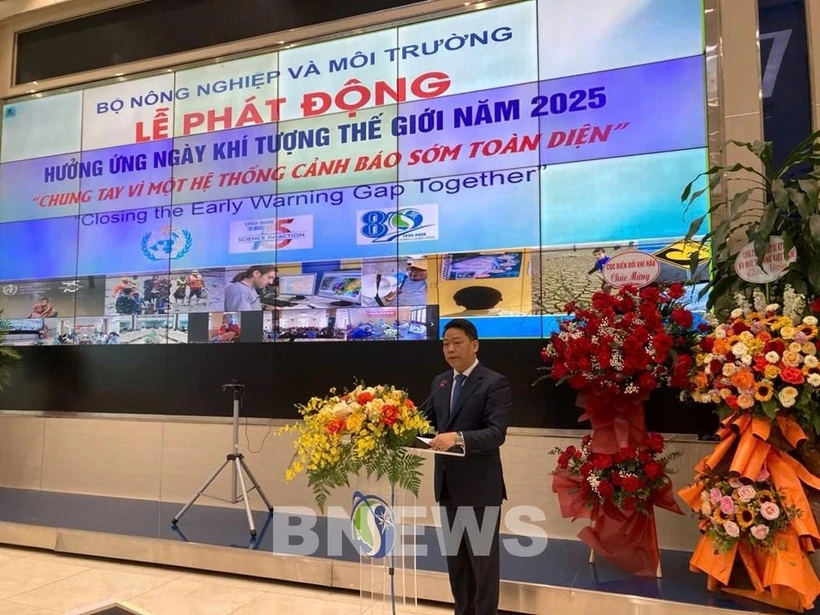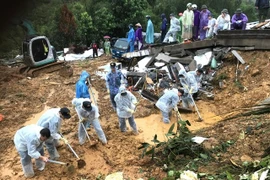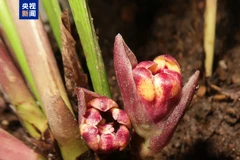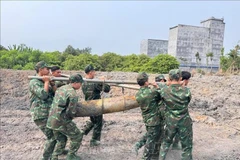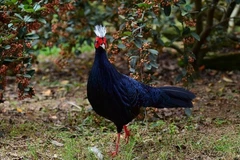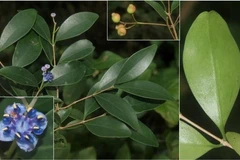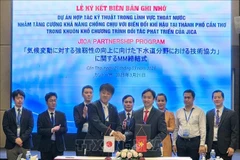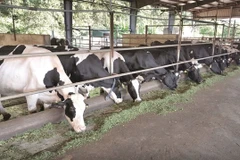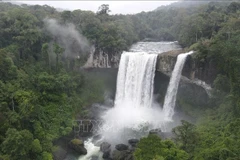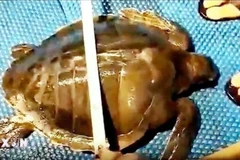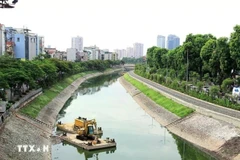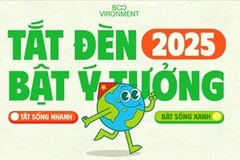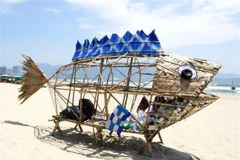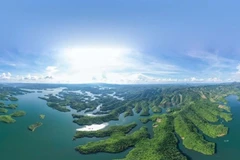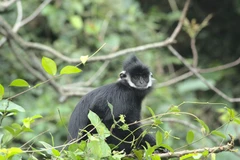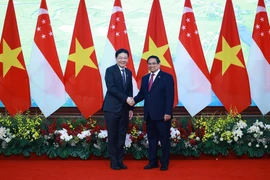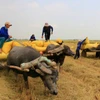Hanoi (VNA) – The Ministry of Agriculture and Environment (MAE) held a ceremony on March 24 to mark World Meteorological Day 2025, under the theme "Closing the Early Warning Gap Together."
The hybrid event was connected with hydrometeorological stations across provinces, cities, and 210 related locations.
Speaking at the ceremony, Nguyen Thuong Hien, head of the Meteorological and Hydrological Administration under the MAE, emphasised that this year's theme underscores the need to enhance national capabilities and foster collaboration at all levels, aiming to ensure the effectiveness of early warning systems worldwide, helping to narrow gaps in disaster forecasting and warnings. He also highlighted the critical role of the hydrometeorological sector in supporting economic and social development, disaster prevention, climate change adaptation, social security, and national defence.
In alignment with Resolution 57-NQ/TW on breakthroughs in science, technology, innovation, and national digital transformation, Vietnam’s hydrometeorological sector has been optimising artificial intelligence (AI), big data, and digital transformation in monitoring and forecasting operations.
The sector has successfully implemented many major projects to upgrade observation systems and forecasting technology, and enhance staff capabilities. However, challenges remain, including gaps in observation networks, limited forecasting capacity, and a shortage of high-quality personnel.
Looking ahead, Hien urged the sector to continue innovating, expanding cooperation, and increasing investment to improve meteorological services. Key priorities include strengthening the implementation of Resolution 57-NQ/TW and prioritising the application of AI, big data, and the Internet of Things in the work.
Focus should be placed on developing a modern observation network, particularly in remote, border, and island areas, while enhancing international cooperation on data sharing, he stated.
It is necessary to improve extreme weather forecasting capabilities and building a multi-hazard early warning system to ensure timely and accurate information. Vietnam must also expand professional training programmes to build a high-quality workforce and raise public awareness of meteorology's role in disaster prevention. It must also strengthen international cooperation to leverage technical, technological, and human resource support.
Assoc. Prof. Dr. Mai Van Khiem, Director of the National Centre for Hydro-Meteorological Forecasting (NCHMF), affirmed that the centre will continue working closely with relevant agencies and international partners to implement the UN "Early Warnings for All" initiative, which aims to ensure universal protection by early warning systems by 2027.
In her message for the occasion, Professor Celeste Saulo, Secretary-General of the World Meteorological Organisation (WMO), warned that extreme weather events are becoming more severe and frequent.
“We are seeing more frequent and intense heatwaves, more devastating storms and floods, and rapidly intensifying tropical cyclones.”
Between 1970 and 2021, global economic losses caused by weather, climate, and water-related disasters amounted to 4.3 trillion USD, claiming more than 2 million lives. Although economic losses continue to rise, the number of fatalities has declined, demonstrating progress in protecting human lives, she noted.
"Our top priority is to ensure that early warning systems protect everyone, everywhere," Saulo stressed./.
